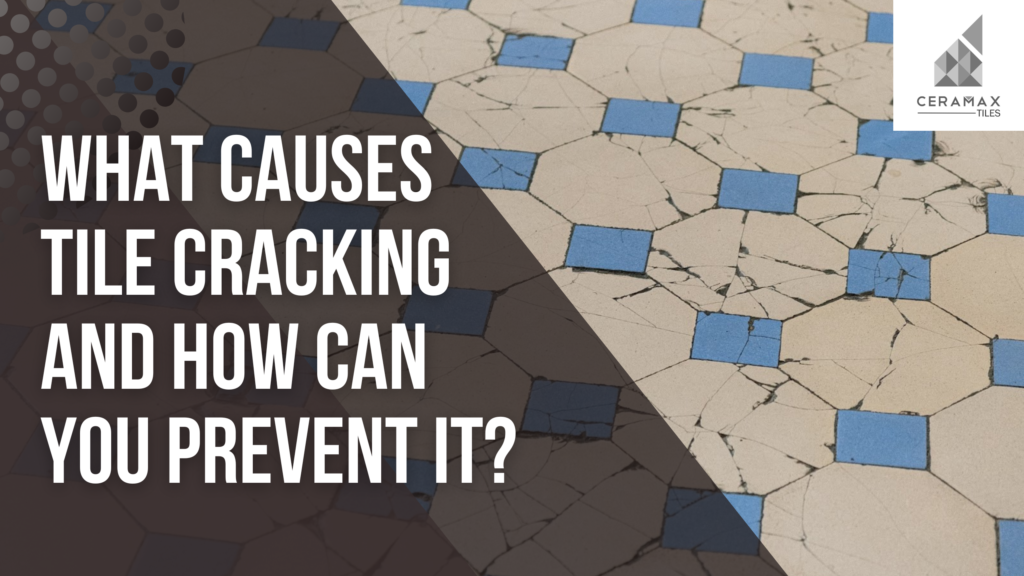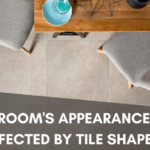What Causes Tile Cracking and How Can You Prevent It?
Because they require little upkeep, are simple to keep clean, and look fantastic, tiles are a fantastic choice for flooring in kitchens and bathrooms. When properly installed, they provide a strong, long-lasting, and useful option for floors and walls throughout the house.
This does not imply that they are without issues, though. Here are a few causes of tile cracking as well as some ways to stop it.
How a Room’s Appearance Can Be Affected by Tile Shapes?
- Faulty Installation
The key is to correctly instal your new tiles on a solid substrate foundation. Incorrect usage of expansion joints, the spaces between the tiles that are grouted over to help with the natural expanding and contracting of the floor surface, can also cause tiles to break. A waterproof membrane is a good idea if you’re utilising tiles in a bathroom to prevent water from seeping through the substrate and harming the floor finish. If you’re still unsure, outsource the work and have a professional tiler instal it. - Incorrect Application or Adhesive
An adhesive (mortar) that completely covers the back of the tile should be used to attach tiles. The tile can become weak and crack if there are any spaces or voids between it and the surface. A flexible adhesive that allows for little movements between hard tiles and the substrate without compromising its stability is also necessary for securing tiles to the surface. Tiles can break if the improper material, such as cement or grout, is used. - Low-quality or Inappropriate Tiles
Not all tiles are created equal, and some types are inappropriate for particular uses. Long-term use of indoor tiles outside or the installation of wall tiles on floors may make them more prone to cracking. - Large Loads
Hairline cracks or greater breaks can occur on tiled floors as a result of heavy loads. Avoid laying tiles immediately under cabinets or large appliances like the fridge or oven when installing floor tile, especially in a kitchen. - A Cracked Base
The likelihood of a tile cracking increases if the surface beneath it does. This may be the result of minute motions, such as the expansion and contraction of wood or concrete, or it may be the result of an installation without a screed or flexible membrane that extends with substrate movement.
Tiles or Marble? Which one to Choose?
HOW CAN CRACKING BE PREVENTED?
The greatest method of avoiding tile cracks is to thoroughly prepare the surface before any installation. The subfloor should first be levelled by an expert. There are several methods for doing this, but the two that are most frequently used are installing plywood and using a leveller.
Your floors need to be fully cleaned by sweeping all debris and filth from their surface and then properly cleaning and scrubbing it. This is done after the floor has been levelled and given time to cure. Keep in mind that any debris still present can lead to cracking.
No matter how clean it is, never apply tile straight to plywood or cement. A fracture-resistant membrane should be installed between your tile and the subfloor. Anti-fracture membranes are made to take any energy that can cause cracking and spread it out over a broader region of the floors. This relieves pressure from any individual tile.
How Can Wood and Tile Flooring Be Used Together?
PRE-INSTALLATION PREVENTION
Preparing your surface adequately before any installation is the best method to avoid tile fractures. A professional should initially level the subfloor. There are several techniques to accomplish this, but the two most popular ones are installing plywood or using a leveller.
Your floors need to be thoroughly cleaned by vacuuming all debris and filth from their surface, as well as properly mopping and scrubbing, once the floor has been levelled and given time to cure. Keep in mind that any leftover material may result in cracking.
No matter how clean it is, never apply tile straight to plywood or cement. A fracture-resistant membrane should be installed between your tile and the subfloor. Anti-fracture membranes are made to take any energy that can cause cracking and spread it out over a broader region of the floors. This relieves pressure from any individual tile.
Top Tile Designs To Enhance The Aesthetics Of Your Living Room
POST-INSTALLATION PREVENTION
Once your tile has been laid correctly, regular cleaning and maintenance can help it last longer. In order to stop mould from spreading and, in certain extreme circumstances, even lifting your tiles, you need also regularly clean the grout between your tiles. Additionally, be sure to fix cracked or damaged tiles as soon as you notice them. Your tiled surface will survive longer if you do this.
Ceramax Tile has a history of supplying high-end goods from the building sector.





